Sensory Sensitivities and Autism: A Guide for Creating Comfortable Environments

“The brain locates, sorts and orders sensations, somewhat like the way a traffic light directs moving cars. When sensations flow in a well organised or integrated manner, the brain uses those sensations to form perceptions, behaviours and learning. When the flow of sensations is disorganized, life can be like a rush-hour traffic jam.”
— Adapted from Jane Ayres, OT
For many individuals with autism, the world can be a sensory rollercoaster. Everyday experiences that others take for granted—the hum of fluorescent lights, the scratch of a clothing tag, the cacophony of a busy cafeteria—can be overwhelming and distressing. This is due to sensory processing differences, a common characteristic of autism. Understanding these sensitivities is essential for creating comfortable and supportive environments at home, school, and work.
To identify possible sensory impacts on behaviour, we need to carefully observe what is happening for that individual. Is there ….
- Too little stimulation (Hyposensitivity): May feel bored, under stimulated, under aroused. When feeling underwhelmed, the person may end up seeking stimulation or attention. Behaviours to look out for -
- difficulty perceiving visual details or depth,
- seeking out intense tactile stimulation or having a high pain threshold,
- seeking out intense movement or having difficulty with coordination.
- Just enough: The person may present as happy, content and able to engage in activities without difficulty.
- Too much stimulation (Hypersensitivity): May feel overwhelmed, overstimulated or overloaded. The person may eliminate or minimise sensory overload by avoiding. They may react with a ‘Fight’ response (responding with anger, irritability), or ‘Flight’ (responding with avoidance, fear or withdrawal) or ‘Freeze’ response (simply shutting down). Behaviours that tell you this -
- sounds may be perceived as excessively loud or painful, bright lights, flickering screens, or visual clutter can be overwhelming,
- certain textures, clothing fabrics, or physical touch can be irritating or painful,
- motion sickness or discomfort with movement -like rides in theme parks,
- strong odors or flavors can be intensely unpleasant

How Can We Create Sensory-Friendly Spaces: Some Practical Tips
At Home:
- Minimize Auditory Overload:
- Use sound-absorbing materials like rugs, curtains, and soft furnishings.
- Provide noise-canceling headphones or earplugs.
- Create a quiet space for relaxation.
- Control Visual Stimuli:
- Use soft, warm lighting instead of harsh fluorescent lights.
- Minimize visual clutter and organize belongings.
- Use blackout curtains to block out light.
- Address Tactile Sensitivities:
- Choose comfortable, seamless clothing made from soft fabrics.
- Provide weighted blankets or vests for calming tactile input.
- Offer sensory toys or fidget tools.
- Smell and Taste:
- Use unscented cleaning products.
- Offer foods with mild flavors.
- Be mindful of strong perfumes or colognes.
- Vestibular and Proprioceptive:
- Provide opportunities for movement, such as swings or rocking chairs.
- Offer heavy work activities, such as carrying weighted objects.
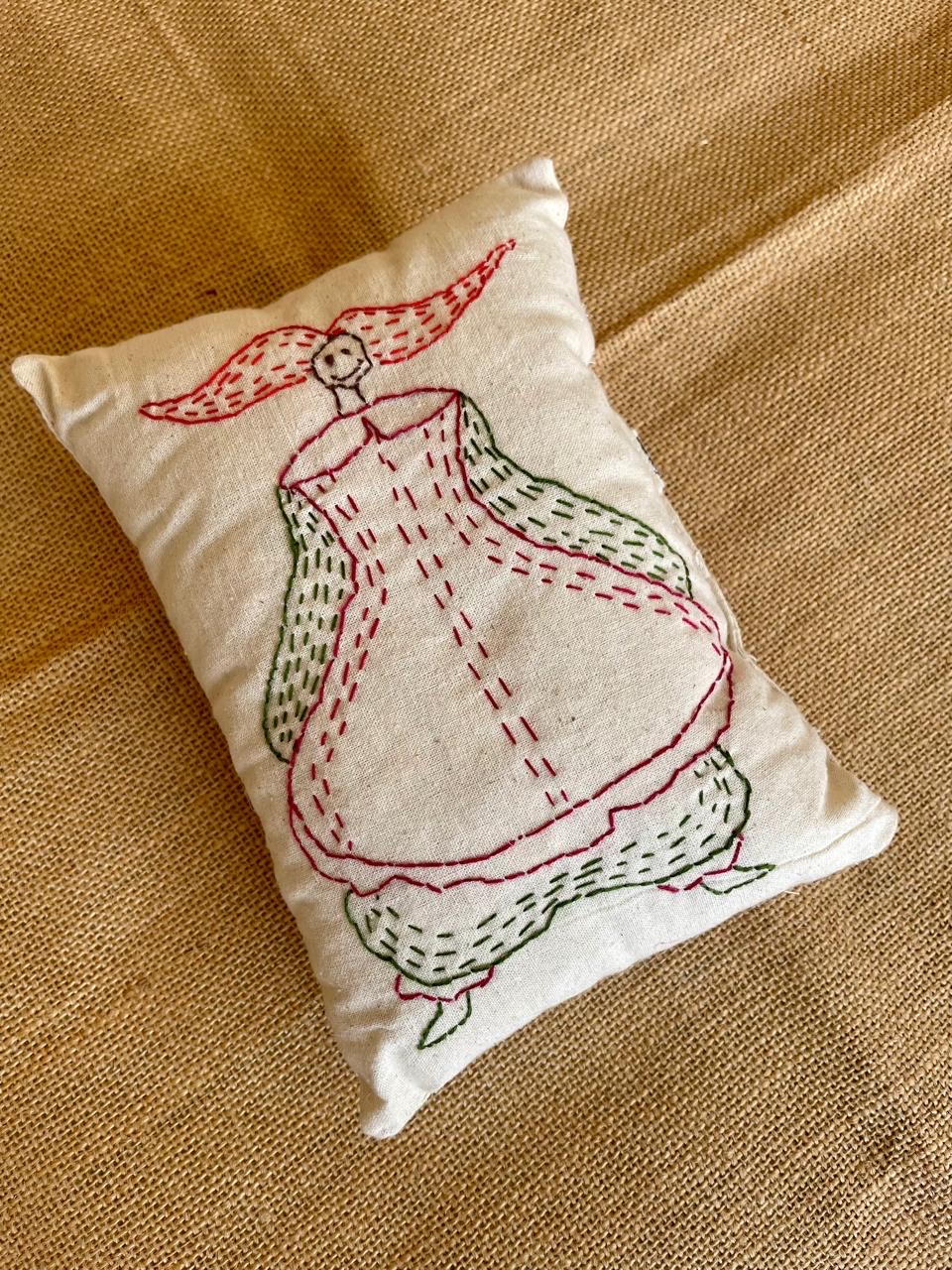
Sensory Pillow
At School:
- Create a Sensory-Friendly Classroom:
- Designate a quiet corner or calming area.
- Provide sensory tools and fidget toys.
- Allow for flexible seating options.
- Use visual schedules and clear instructions.
- Communicate with Teachers:
- Share information about the student's sensory sensitivities.
- Collaborate on strategies for managing sensory overload.
- Allow for sensory breaks.
- Allow for the use of noise cancelling headphones, and sunglasses.
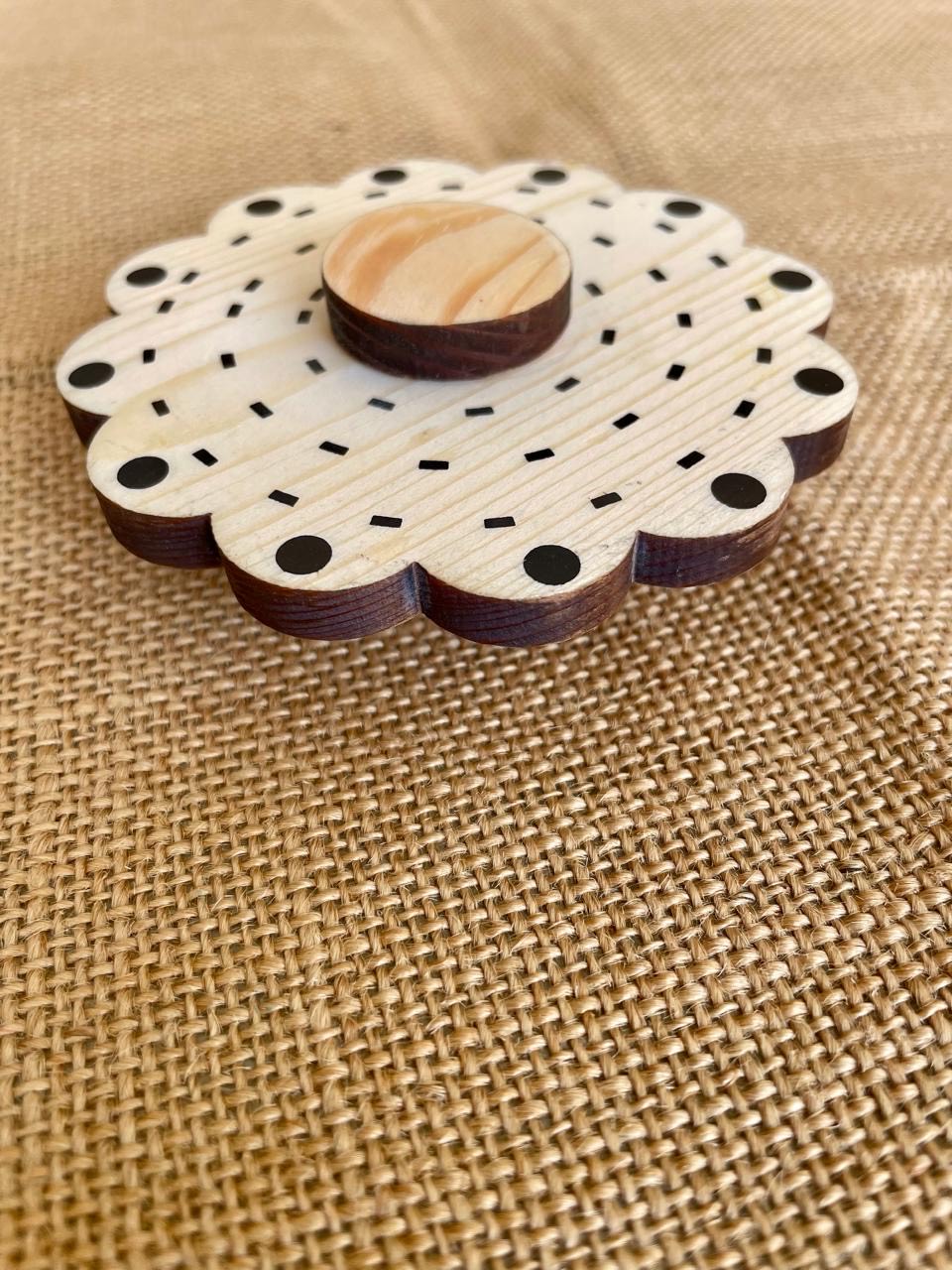
Fidget spinner
At Work:
- Provide Workplace Accommodations:
- Offer a quiet workspace or private office.
- Allow for flexible work hours or remote work options.
- Provide noise-canceling headphones or earplugs.
- Allow for adjustable lighting.
- Promote Sensory Awareness:
- Educate colleagues about sensory processing differences.
- Create a culture of understanding and respect.
- Make changes to common areas to reduce sensory overload.
- Open communication is key between employer and employee.

Ear plugs
When you travel:
Do check out the great work done by BIAL and Incluzza to make sure everyone’s travel experience is comfortable. For passengers with sensory disorders, travelling is particularly stressful. The newly opened Sensory Room at Terminal 2 is a calming space with customisable sensory elements. Do read more about it here - BlrAirportInclusionT2
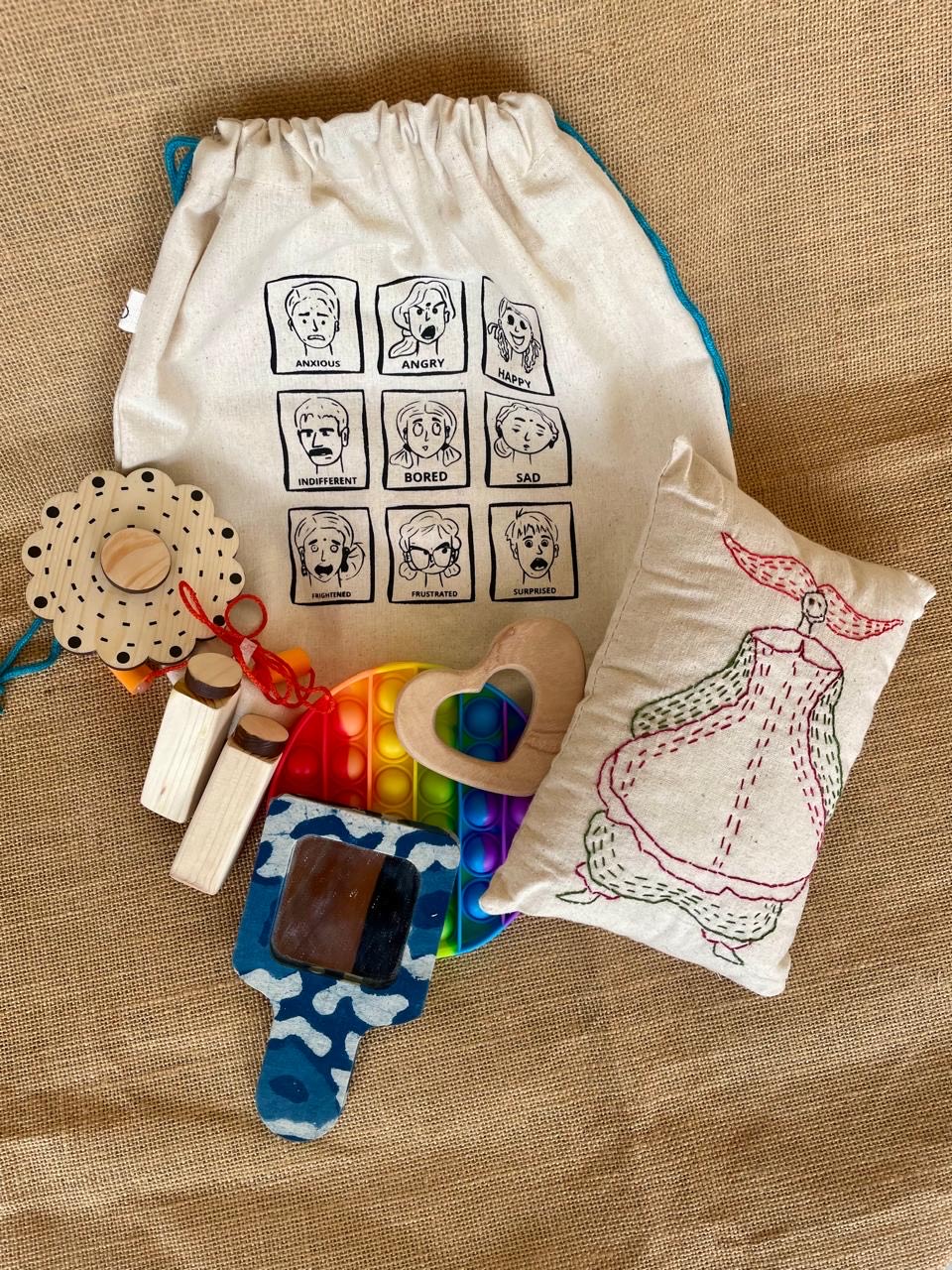
A sensory kit designed and created at Diya
Mellow Moods from Diya:
The Emotions Bag and its contents make up Mellow Moods, a sensory kit designed and created at Diya, and you can order it here. It’s great for when you travel and has small aids that can help with certain sensitivities. The bag contains ear plugs, a sensory pillow, a colourful dimpled popper, lavender & citrus smelling salts, Tic Tac Toe on the Go, a fidget spinner, some candy and relaxing peppermint teabags, as well as a mirror. Each item in the bags addresses different sensory sensitivities…you can add other items you find work well for you or your child.
It's crucial to remember that sensory sensitivities are highly individual. What works for one person may not work for another. Encourage open communication and work together to identify the most effective strategies.

Lavender and citrus smelling salts
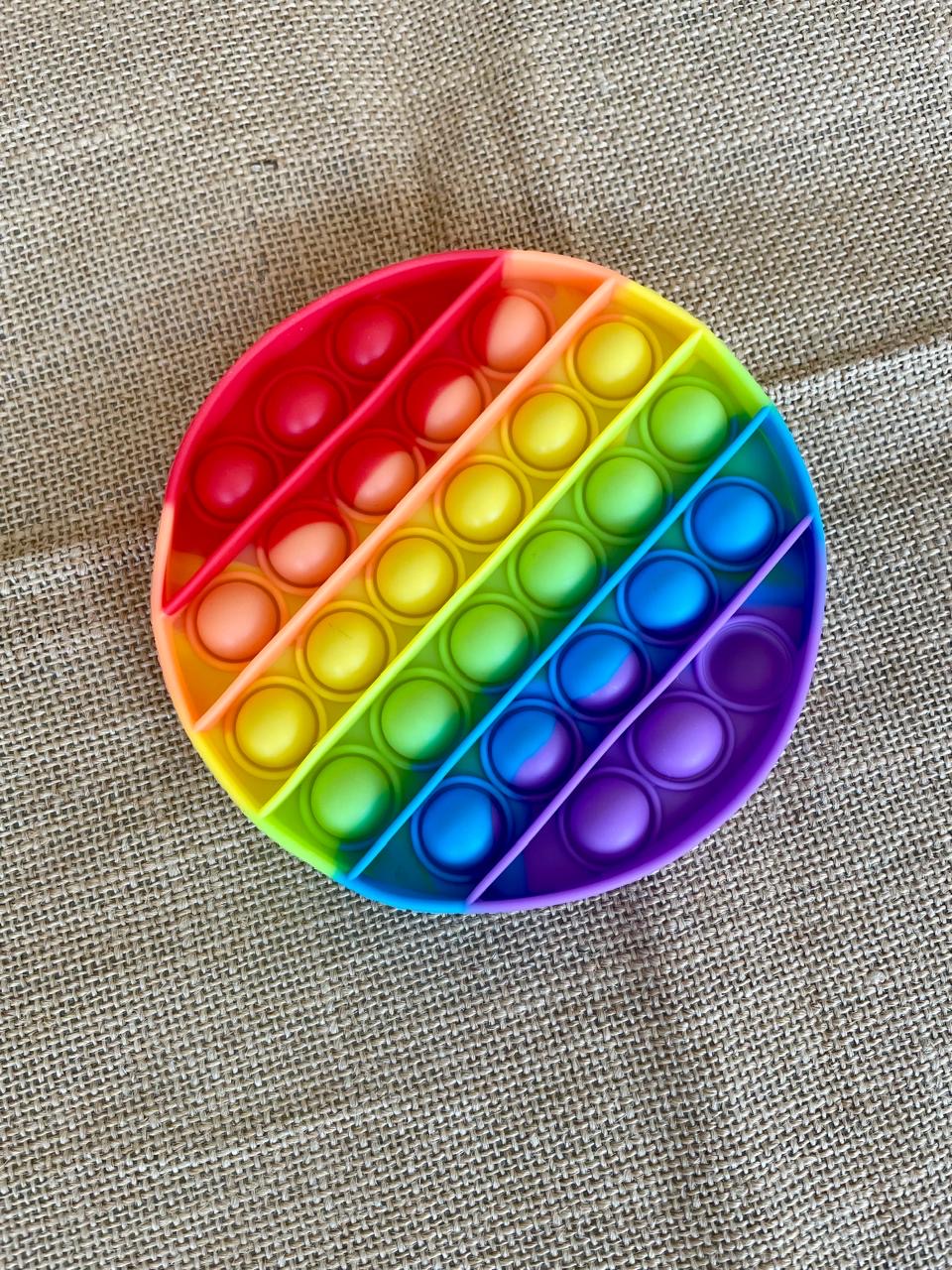
A Pop-it sensory toy
Conclusion:
Creating sensory-friendly environments is an act of inclusion and respect. By understanding sensory processing differences and implementing practical strategies, we can make the world a more comfortable and accessible place for individuals with autism.






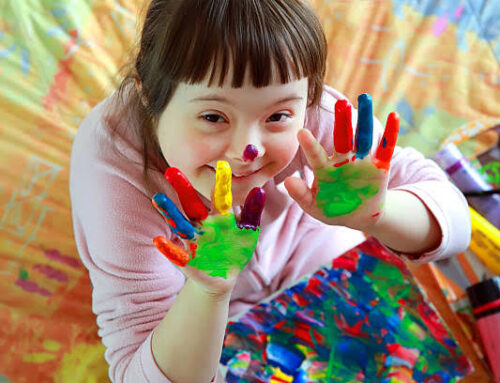

Leave A Comment